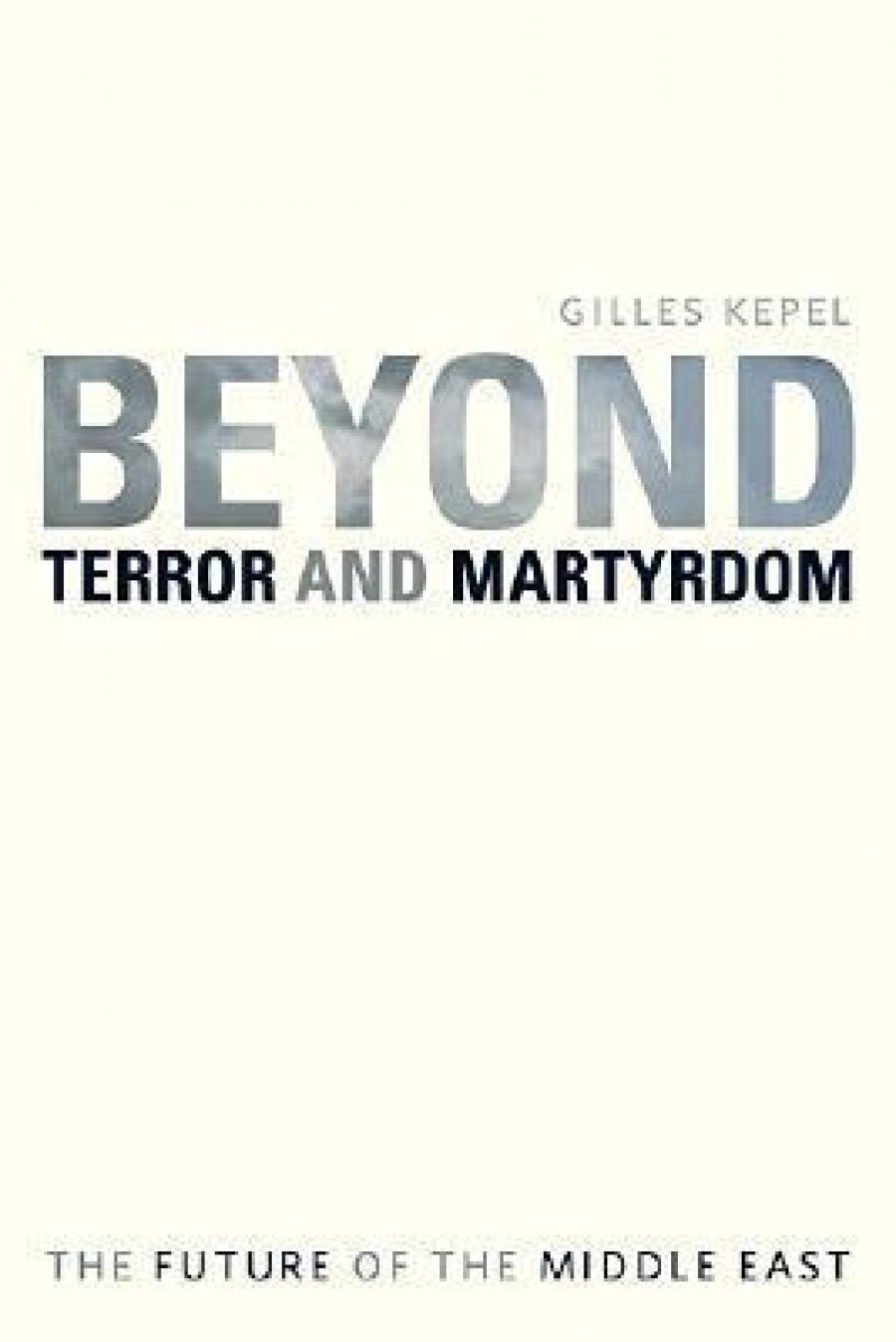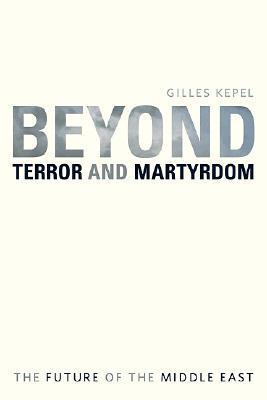
- Free Article: No
- Contents Category: Politics
- Review Article: Yes
- Article Title: Full circle for martyrdom
- Online Only: No
- Custom Highlight Text:
This is an exhilarating coverage of everything to do with the politics of the Middle East. Gilles Kepel takes the reader on a journey over the trouble spots and offers a bird’s eye view of the complexities of Islamic radicalism in the region. The book starts slowly but soon settles into a quick pace, taking the reader from place to place and event to event with case and mastery. Kepel does not shy away from displaying his intricate knowledge of Islam and the Middle East, a habit that might not agree with every reader; but it does help the novice to navigate the many issues that interweave into a grand narrative regarding the evolving nature of jihad.
- Book 1 Title: Beyond Terror and Martyrdom
- Book 1 Subtitle: The Future of the Middle East
- Book 1 Biblio: Harvard University Press (lnbooks), $49.95 hb, 328 pp, 9780674031388
- Book 1 Cover Small (400 x 600):

- Book 1 Cover (800 x 1200):

Suicide attacks were not popular among the Sunni population, which has a series of injunctions against self-harm. It took more than ten years after the adoption of martyrdom operations by Hezballah for Hamas to turn to suicide bombings. In the 1990s a wave of suicide attacks swept across Israel, predominantly targeting Israeli civilians. What is ironic, however, is that, with the fall of Saddam Hussein and Iraq’s descent into lawlessness, Sunni martyrdom operations now target the Shi’a. Martyrdom has come full circle.
Kepel proceeds to distinguish between three phases of jihadism. The first phase, he argues, relates to the pre-Internet and pre-Al Jazeera era when ideas were transmitted by less sophisticated means. This phase was marked by a rejection of political means and coalescence of the belief that only through a military solution would the ideal Islamic state be achieved. The defeat of the Soviet army by the Afghan Mujaheddin (albeit sponsored by the United States) was seen as proof of that conviction. The second phase rested on the growing assertiveness of jihadists who had been inspired by their victory and by the ascendancy of the Taliban. Osama bin Laden and Ayman al-Zawaheri personified the second phase. They deemed the Muslim world ready for jihad against the West and sought to beckon the ultimate battle in the clash of civilisations by planning and executing spectacular martyrdom operations. The coordinated 9/11 attacks were in that vein, but their consequences were quite the opposite. Rather than inspiring a global jihad, Al Qaeda was overpowered by the military might of the United States. The consequent destruction of Al Qaeda as a hierarchical terrorist organisation effectively put an end to centralised global jihad.
In the wake of this military defeat, a new generation of jihadists has emerged. It disputes the triumphalist rhetoric of Al Qaeda and rejects its signature spectacular attacks as premature. This new phase, Kepel argues, is marked by a manageable approach to jihad that is dispersed and uncoordinated. Kepel contends that Abu Musa Zarqawi, in Iraq, represented the new phase as he focused on creating ‘“liberated” pockets, like the town of Falluja in 2004.’ This approach also found favour among some jihadists in Europe, who viewed Zarqawi’s jihad as ‘resistance.’
Kepel’s efforts to delineate the phases of jihad carry some weight. It is clear that Al Qaeda’s operations represented a serious escalation of earlier attacks on US interests in the Middle East. It is also clear that the military capabilities of jihadists have been curtailed, with their organisational infrastructure in tatters. But what do these tactical setbacks reveal about the nature of the challenge and prospects of jihad? How is the third phase qualitatively different from earlier phases? Kepel’s concern with demarcating phases of jihadism may have come at the expense of exploring the common thread that runs through them. One thing is clear: none of the jihadist protagonists diverges from these key tenets of jihadism. The Muslim world is in a civilisational clash with the West; Muslims are betrayed by their ‘apostate’ rulers; military jihad is the only way for the salvation of the umma: this military confrontation is inevitable; and the clash will herald the global victory of jihadist Islam. This self-assured belief in the ultimate victory of Islam, shared by jihadists of all phases, is grounded in blind faith and on exclusive claim on truth.
Kepel then turns his attention to Europe and the rise of ‘homegrown’ terrorism, which exemplifies his third phase of jihadism. The assassination of Theo Van Gogh in Amsterdam by a lone jihadist (2004), the London bombings (2005), and the ‘doctors’ plot of a group of Muslim physicians to blow up Glasgow Airport (2007) represented a more difficult challenge to European security forces. The difficulty is not just in how the handful of jihadists may be distinguished from the rest of the Muslim population in Europe, but how to stop the process of jihadist recruitment. Here, Kepel makes candid observations about the nature of multiculturalism, which, he argues, has encouraged the preservation and regeneration of separate identities, especially in the United Kingdom. Multiculturalism, he argues, has made it possible for Muslim communities to live as a sequestered subgroup. The implicit association between multiculturalism and ghettoisation is unmistakable. The division between Muslims and non-Muslims has led many observers to ask whether they can trust Muslim citizens. This is the greatest harm that jihadism has done to Muslims.
Kepel concludes his book by returning to the Middle East. Noting the importance of economic integration for peace and prosperity, he offers a rather odd recommendation as a safeguard against regional hostility: nuclear energy. He boldly asserts that ‘a string of civilian nuclear power installations along either side of the [Persian] Gulf will deter any armed adventure.’ He then suggests that Europe should take advantage of its technical expertise to build and maintain nuclear power installations. It is difficult to connect the dots here, as this chapter (especially the discussion of regional security and nuclear energy) has no direct relevance to the theme of the book. Unfortunately for this reader, this chapter confirms the overall impression of the book as a collection of musings of a very well-informed French intellectual.
Kepel has some sage advice for the new American president about the significance of politics over ideology in response to jihadism, the limits of military might and the need for coalition-building in a multipolar world. These are important points for Barack Obama to remember.


Comments powered by CComment